The Rolex Milgauss 116400GV was released in 2007, celebrating the model’s 50th anniversary. It was the first time Rolex released a model with a green crystal. It was one of the first serial-production watches with a colored sapphire crystal, indicated by the GV suffix, or “glasse verte” (French). Since this initial model, Rolex released a few iterations on the same model. Of note is the green sapphire model with blue dial, called Z-blue and non-green crystal models with white and with black dials. Since the entire Milguass line was discontinued in 2023, it’s worth asking whether this Milgauss model is already a future collectible? And more importantly why it has a permanent place in my collection?
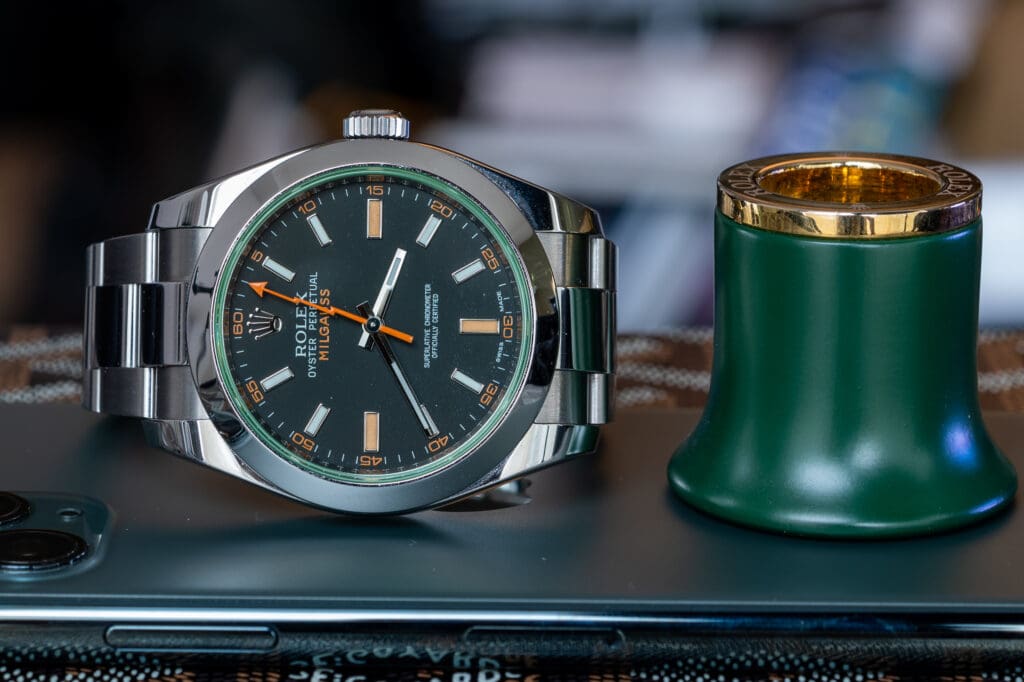
The original Milgauss was released in 1956-1957 as a watch for scientists. The name Milgauss is derived from Mille and Gauss, which translates into “1000 of Gauss”, a measurement of magnetism named after the famed German mathematician and physicist Carl Friedrich Gauss. While the original model did not gain the widespread acceptance of other sports Rolex models, like the Submariner or the GMT Master, the Milgauss has had a steady cult following.
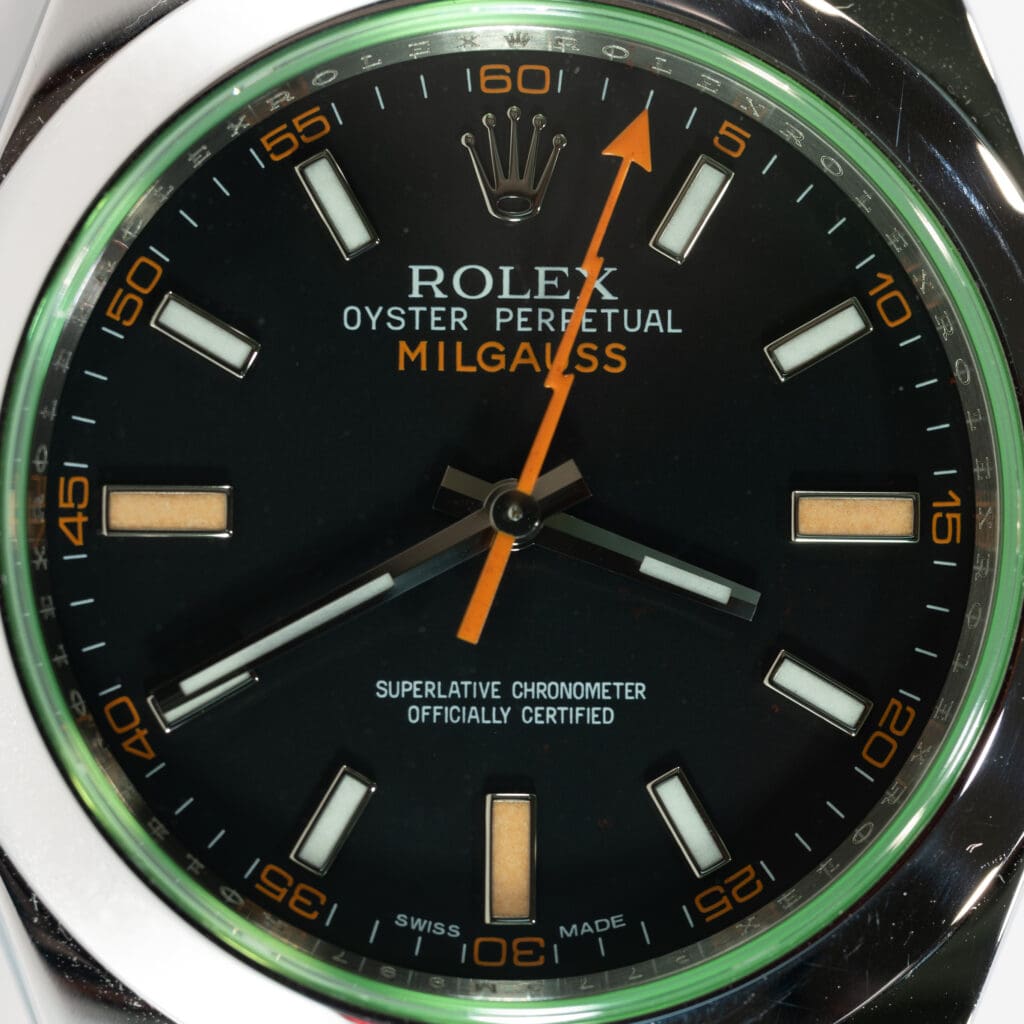
A recent 2023 spring auction at Phillips, in Geneva, had a pristine 1958 model, reference 6541, sell for a record $2.2M! As a watch designed for scientists, the Milgauss includes (old and new models) a unique lightning bolt hand that makes it easily recognizable. And, while its anti-magnetic capabilities have been greatly surpassed by METAS-certified watches (and other models), it is a watch with utility in our modern world of iPad, iPhone, and other devices that include magnets to facilitate case and accessories attachment.
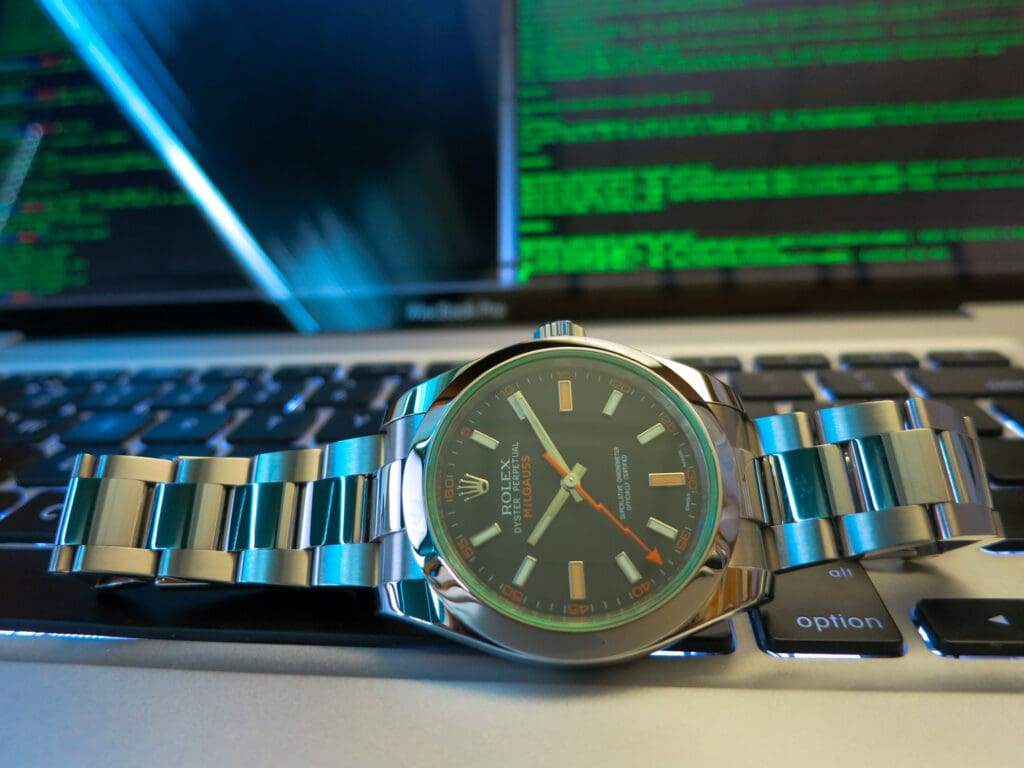
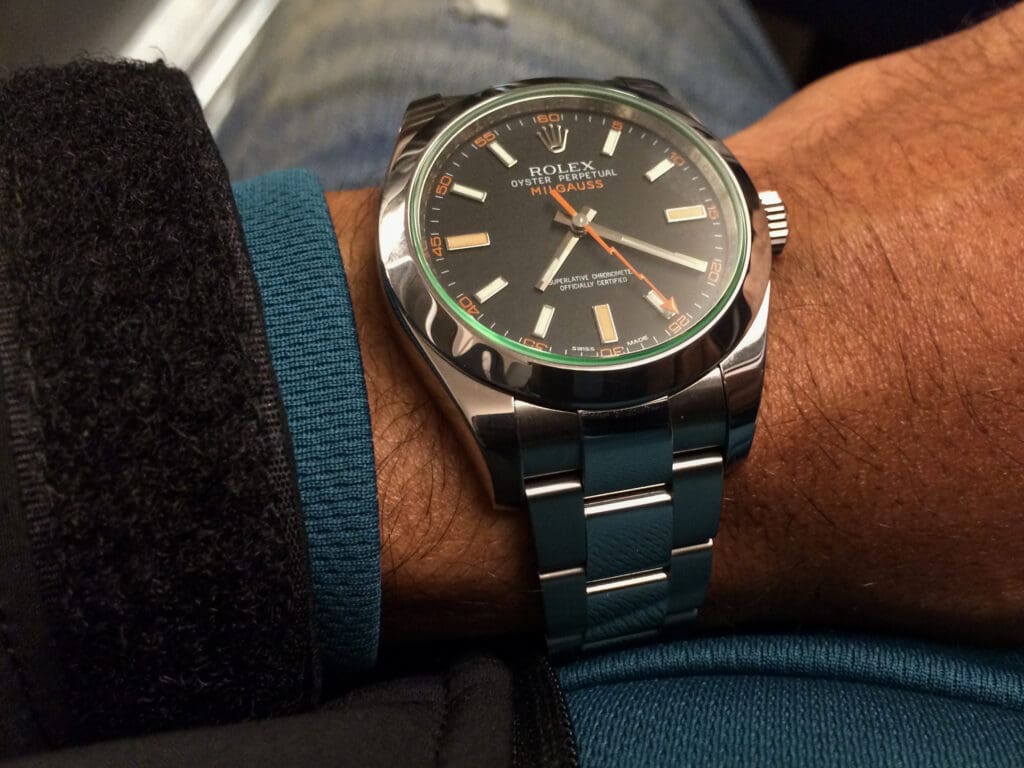
The Rolex Milgauss 116400GV is an easy watch to wear. At 40mm wide, a touch over 13mm thick, and 49mm lug-to-lug, once adjusted, it fits my 6.5-inch wrist perfectly, and the mostly shiny and polished case complements the unique green crystal. The orange lighting bolt adds charm and uniqueness. At 150 grams (give or take a few links) it’s on the heavy side for a watch this size, however, weight has never been a concern of mine while wearing it for 8+ hours straight at work. As a scientist and engineer, the Milgauss has always been a fixture in my collection and a watch I wear often to work since acquiring it for my 40th birthday. But are there any downsides to the Milgauss? What’s my favorite and least favorite feature?
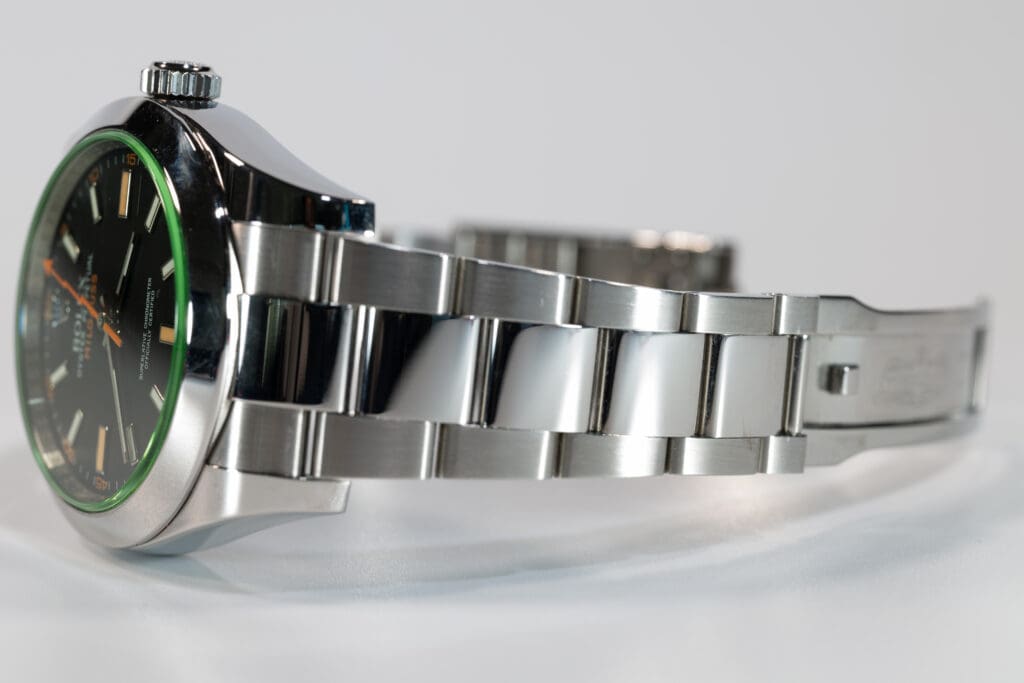
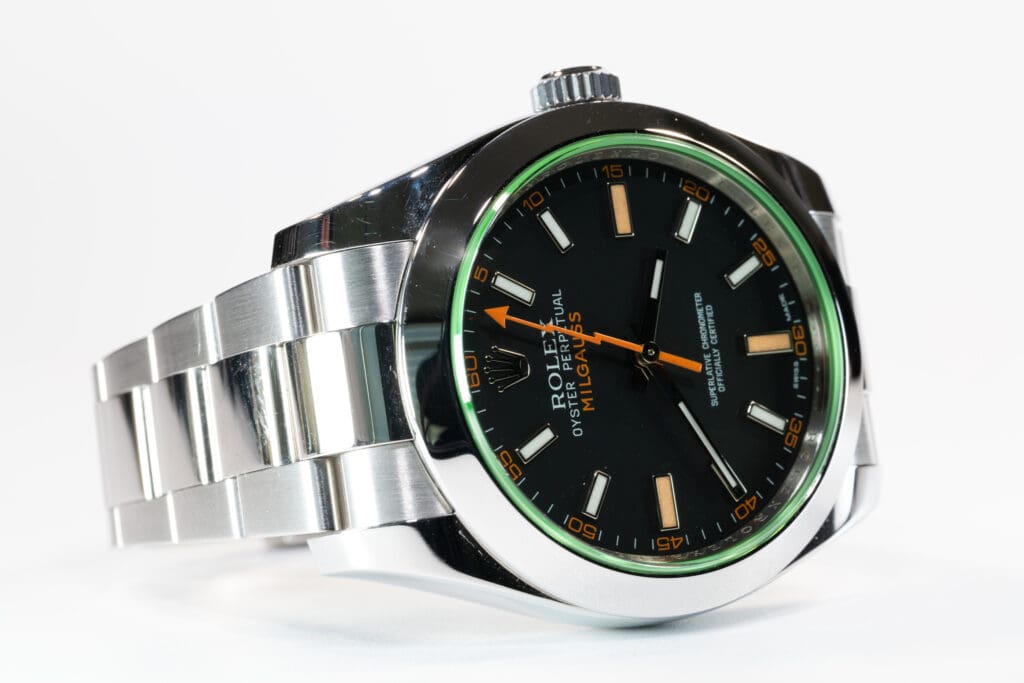
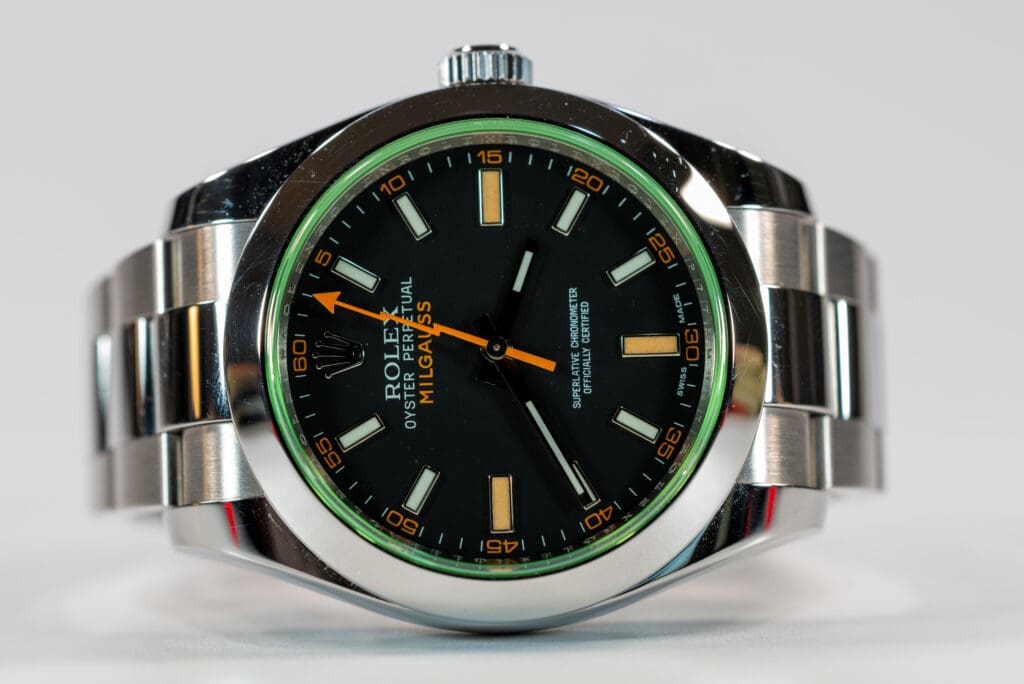
The Milgauss is unique in Rolex’s lineup not only due to that striking lighting orange hand (my favorite aspect), but mainly because, unlike all the other Rolex professional watches, it was designed to be worn inside, in laboratories, and at work. The lack of decent luminescence (my least favorite feature) on the dial and of a date could be a non-starter for a work watch and make it less versatile. However, this restraint increases the dial’s symmetry and beauty.
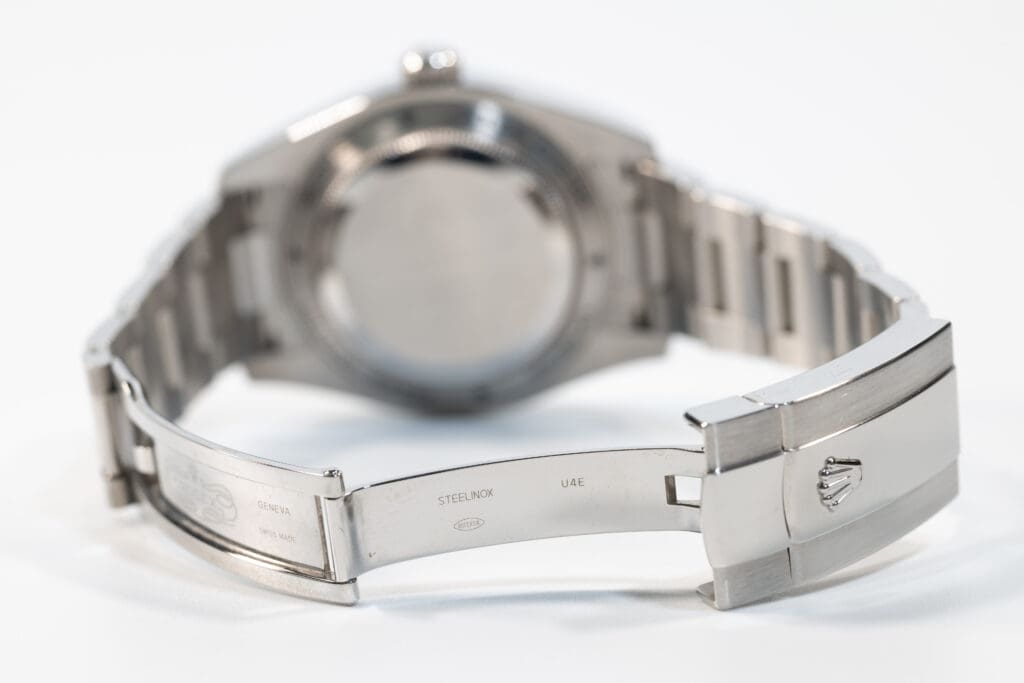
With IWC re-releasing its engineering watch in 2023, Rolex’s retirement of the Milgauss is coming at an interesting time for work and engineering/scientist watches. But are these distinctions even needed today with most people working from home or working remotely, meeting via the Web? Perhaps not, but as a way to raise the emotions and as a conversation starter in in-person meetings, maybe wearing a Milgauss is more important than ever before.
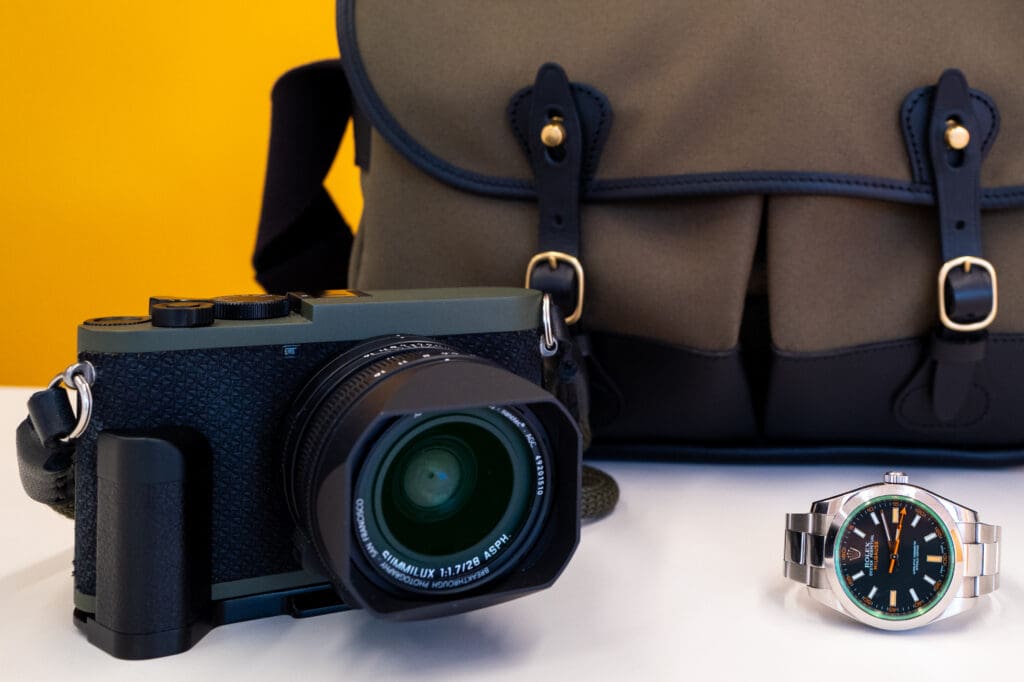
About the Gear
All photos are original and shot with Leica cameras and an assortment of Leica lenses and other macro lenses adapted to the L-mount. The macro table shots with the Leica Q2 Monochrom “Reporter” were taken with Leica QP. The macro close-up shots are all taken with Leica’s SL2 and 100mm APO-Macro-Elmarit-R f/2.8 lens adapted to the L-mount as well as with the SL2-S and the 60mm APO-Macro-Elmarit-TL f/2.8. And the wrist shot was taken with an iPhone.
If you’re looking for any of the items listed above, keep an eye on Camera West’s Pre-Owned Drop for regular updates on one of the finest selections of quality photographic gear on the internet.
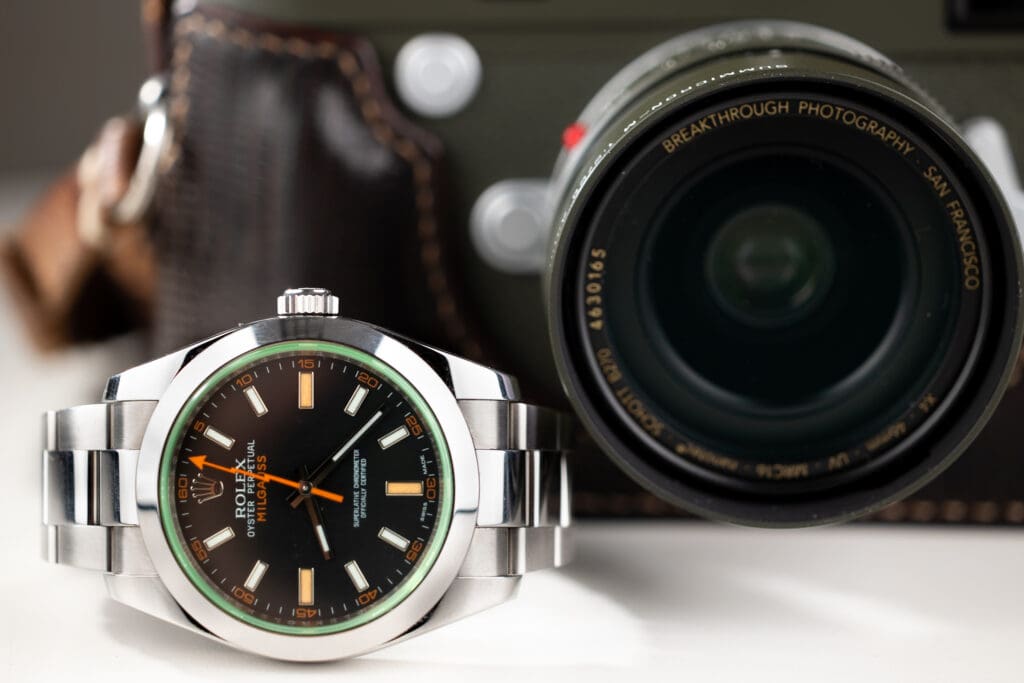
Michael Maximilien



